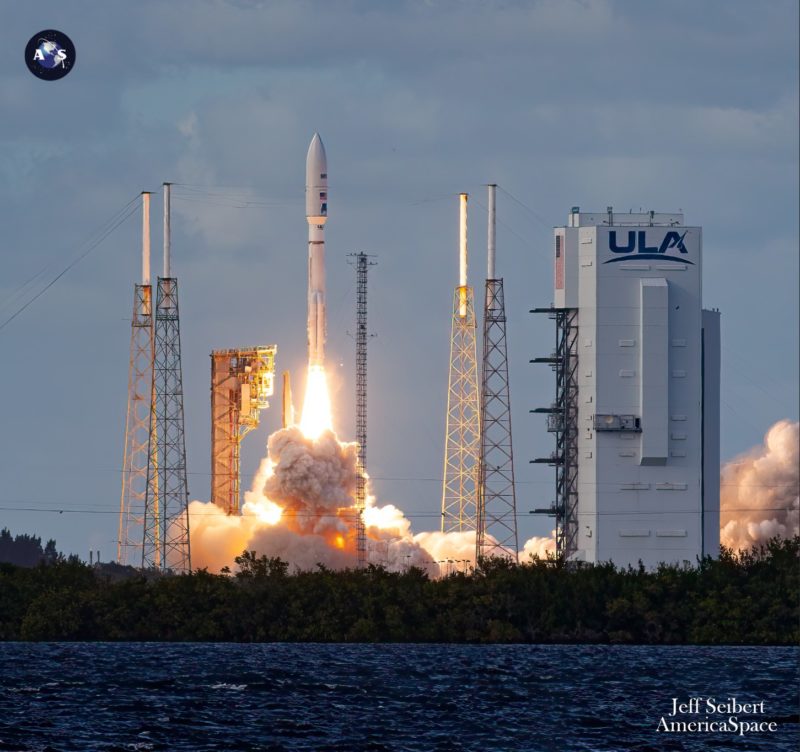
Photo credit: Jeff Seibert/AmericaSpace
Despite the recent ravages of Hurricane Ian, United Launch Alliance (ULA) has successfully flown a second mission within ten days, delivering the dual-stacked SES-20 and SES-21 geostationary communications satellites aloft from storied Space Launch Complex (SLC)-41 at Cape Canaveral Space Force Station, Fla., on behalf of Luxembourg-headquartered SES.

Just over a week ago, the final Delta IV Heavy—carrying the classified NROL-91 payload for the National Reconnaissance Office—took flight from Space Launch Complex (SLC)-6 at Vandenberg Space Force Base, Calif.
This marks the first time in more than four years since ULA last attained such a rapid back-to-back cadence between missions.
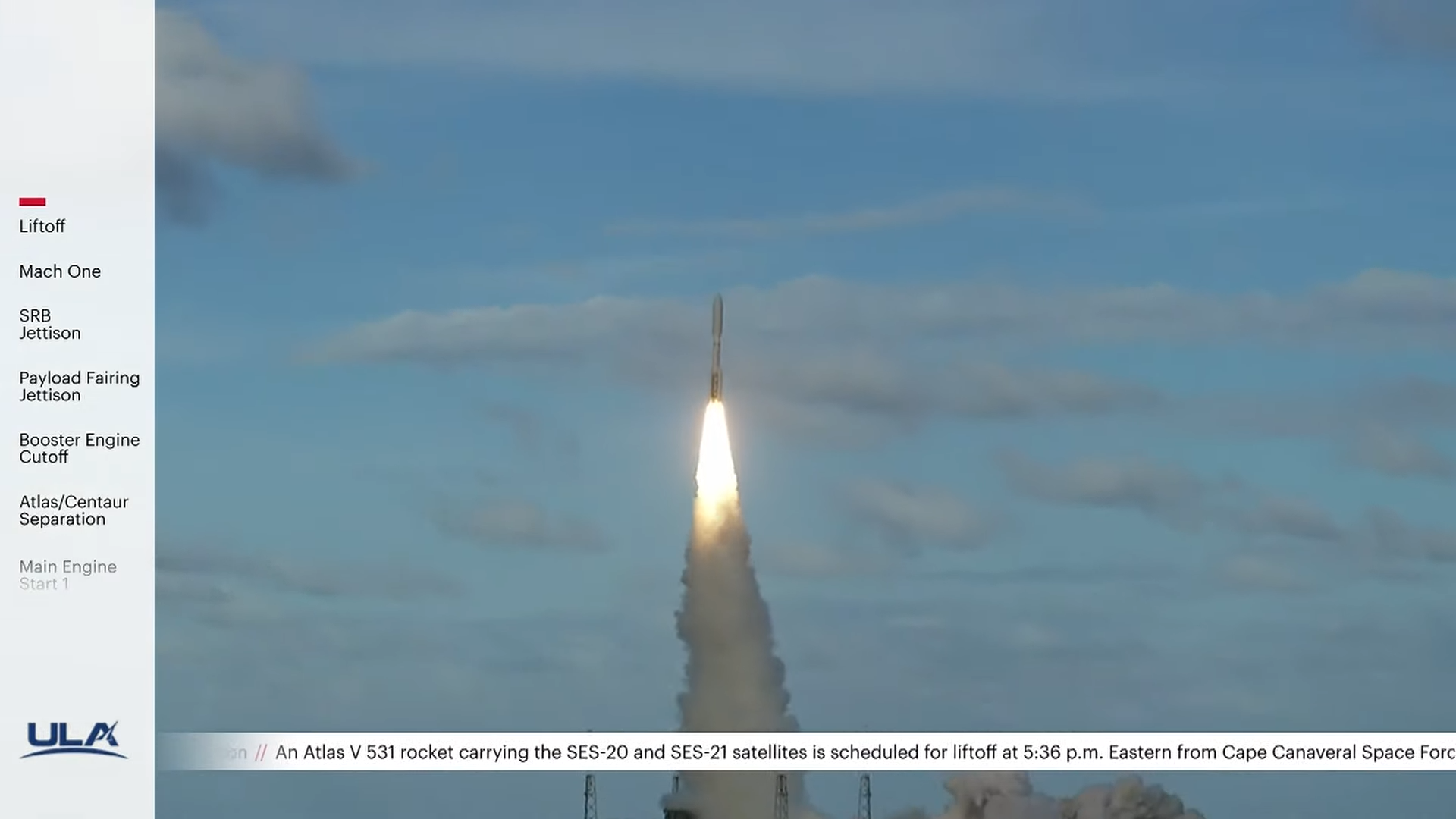
The weather for Tuesday evening’s 5:36 p.m. EDT launch was almost ideal. In its L-1 briefing, the 45th Weather Squadron at Patrick Space Force Base predicted an 80-percent probability of acceptable conditions.
“A few low-topped showers moving onshore and low clouds are forecast through Tuesday afternoon,” it noted, “with winds remaining breezy from the north. The primary concern is the Cumulus Cloud Rule.”
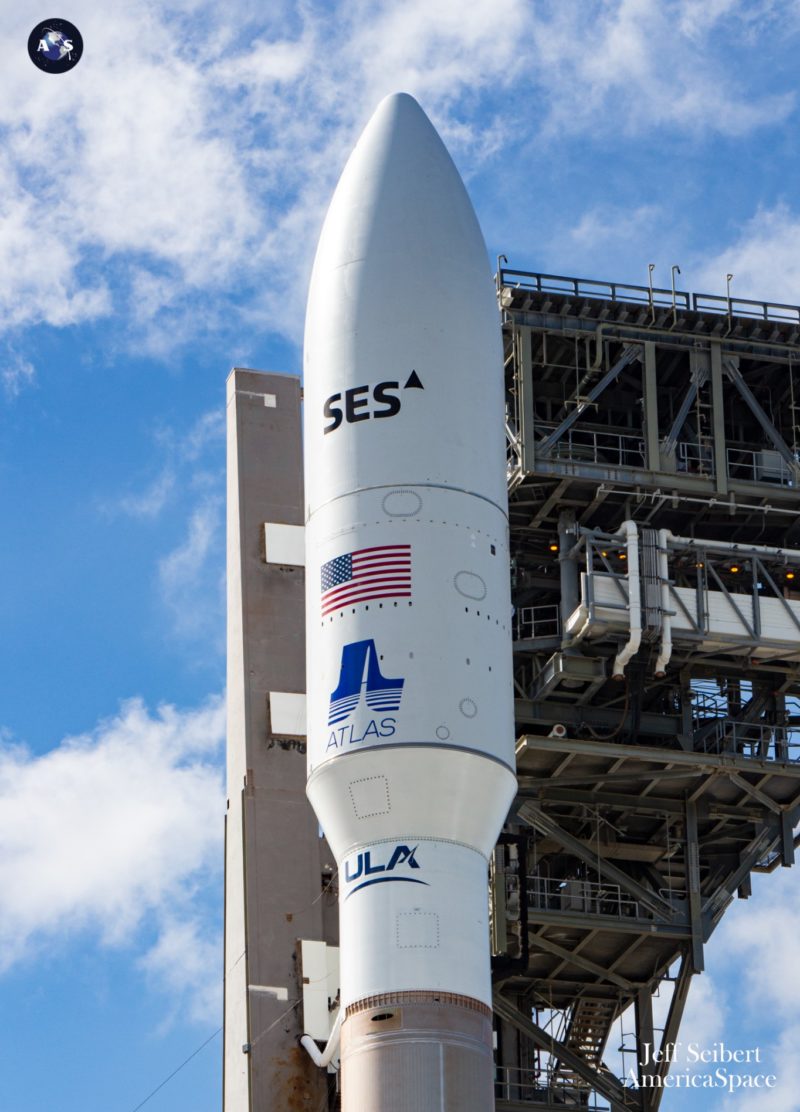
Launch was originally baselined within a month-long “window” extending from 7 September through 7 October. But the priority of NROL-91 from Vandenberg found SES-20/21’s No Earlier Than (NET) date shifted to no sooner than 30 September.
This was pushed back a few more days to 4 October as the Space Coast braced against Hurricane Ian. Also impacted were SpaceX Falcon 9 operations in Florida, notably the launch of Dragon Endurance on the Crew-5 mission, which slipped a couple of days to the right, settling on a new NET of noon EDT Wednesday, 5 October.
Flying only ten days after NROL-91—albeit from the opposite coast of the United States—tonight’s mission marks the first time in more than four years that ULA has conducted dual launches within such a short span of time.
Back in January 2018, a Delta IV Medium booster rose from Vandenberg on the 12th of that month, laden with the classified NROL-47 payload for the National Reconnaissance Office, to be followed eight days later on the 20th by an Atlas V, carrying the fourth geostationary element of the U.S. Space Force’s Space-Based Infrared System (SBIRS GEO-4).
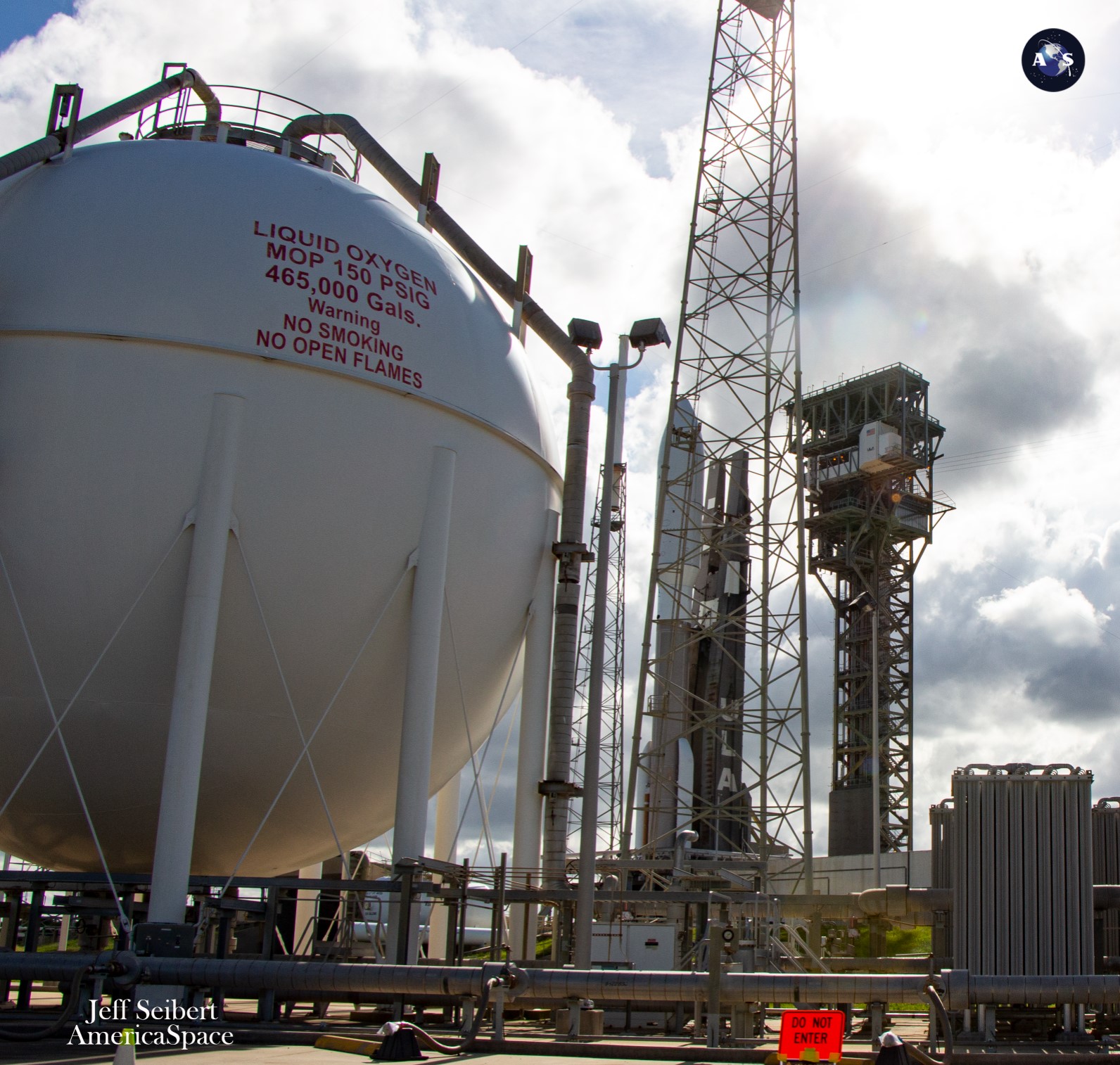
And the payload for tonight’s mission is being flown on behalf of Luxembourg-based satellite communications provider SES. In the summer of 2020, ULA won the launch services contract to transport SES-20 and SES-21 to orbit.
It was noted that the Atlas V has the ability “to deliver both satellites to an advantageous orbit that will dramatically reduce the amount of time leading up to the satellites entering service”. Both SES-20 and SES-21 are expected to be declared operational in November.
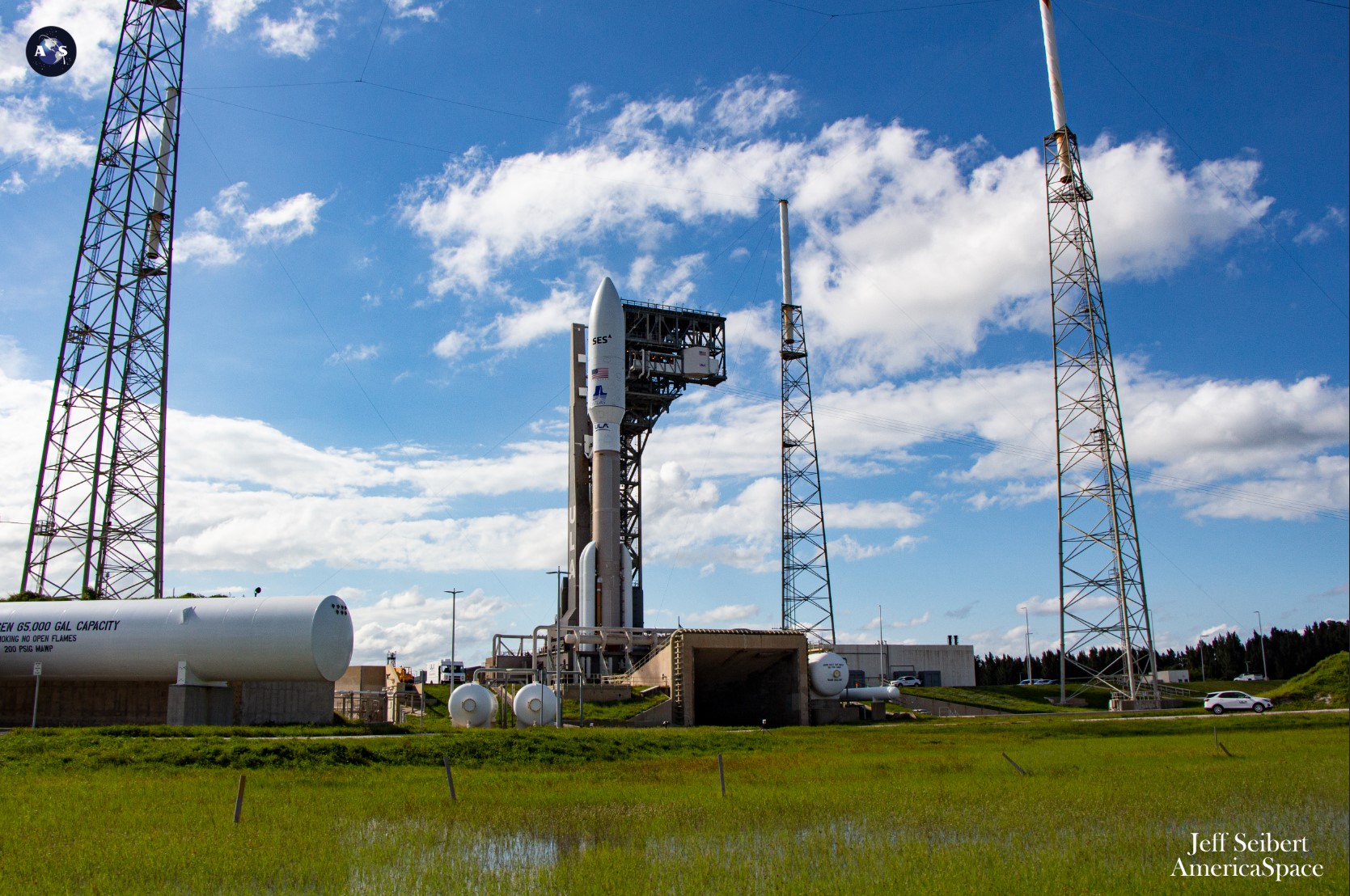
The two satellites each carry ten C-band transponders and are part of an ongoing effort to accelerate SES’ C-band clearing plan to meet a Federal Communications Commission (FCC) objective to roll out 5G services. The arrival of SES-20 and SES-21 facilitates the broadcast delivery of digital television to over 120 million homes, plus data services.
To meet the FCC deadline of clearing C-band spectrum across the United States, SES ordered four new satellites—SES-18, SES-19, SES-20 and SES-21—to be delivered into orbit. In June 2020, Northrop Grumman Corp. was selected to build SES-18 and SES-19, leveraging its flight-proven GeoStar-3 “bus”, with Boeing chosen to fabricate SES-20 and SES-21 on its all-electric 702SP satellite platform.
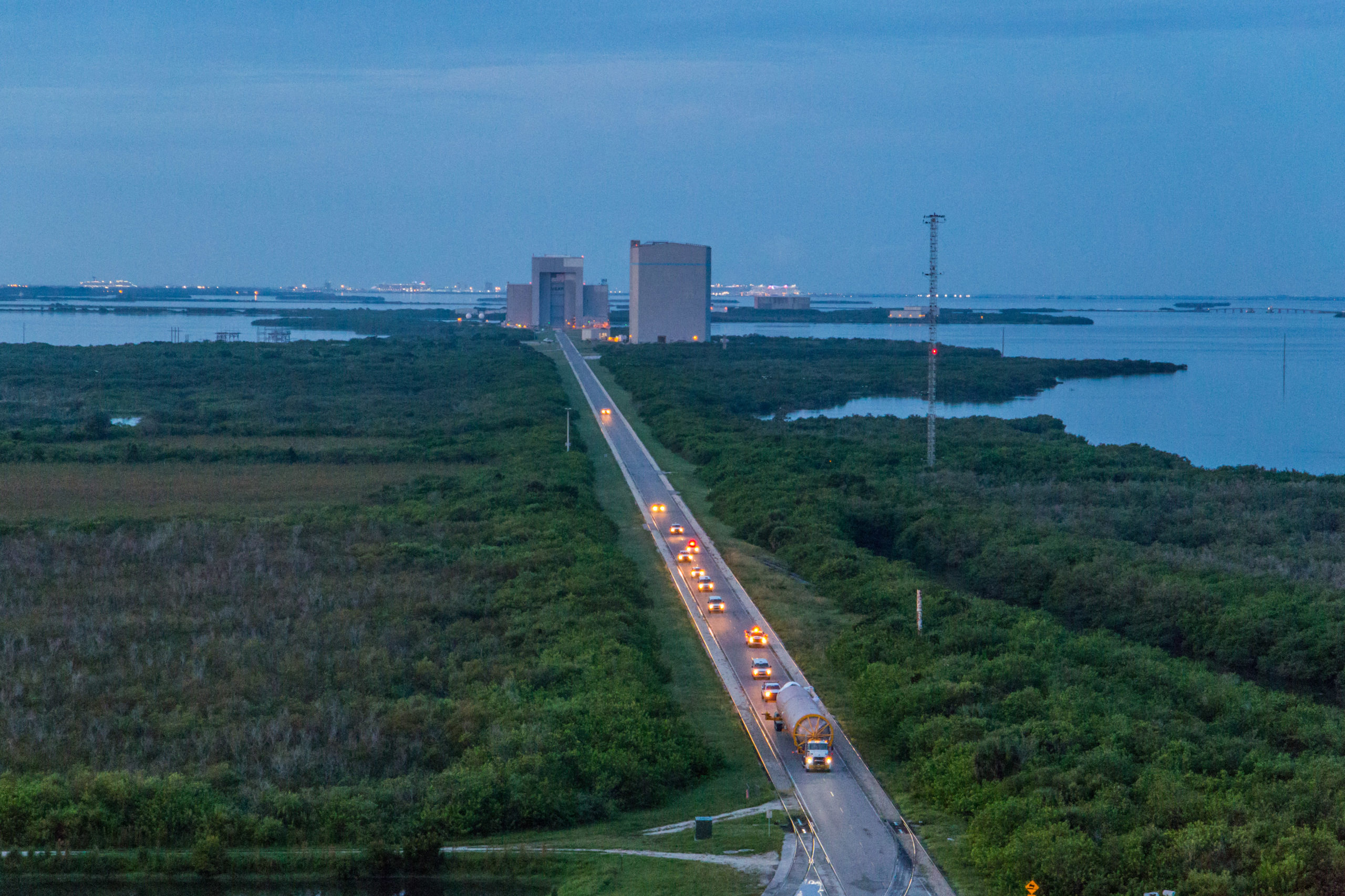
In August, the two satellites arrived at the Cape to be fueled and integrated into the 17.7-foot-diameter (5.4-meter) Short Payload Fairing (SPF). The SES-20/21 launch campaign formally began in late August, with the Launch Vehicle On Stand (LVOS) milestone, when the 107-foot-long (32.6-meter) Atlas V Common Core Booster (CCB) was rotated upright in the 30-story Vertical Integration Facility (VIF) at SLC-41.
Three Graphite Epoxy Motors (GEM)-63 solid-fueled boosters were installed at the base of the Atlas and on 21 September the SPF containing the SES-20/21 “stack” was installed atop the vehicle. Fully assembled, the “Mighty Atlas” stood an impressive 196 feet (59.7 meters) tall.
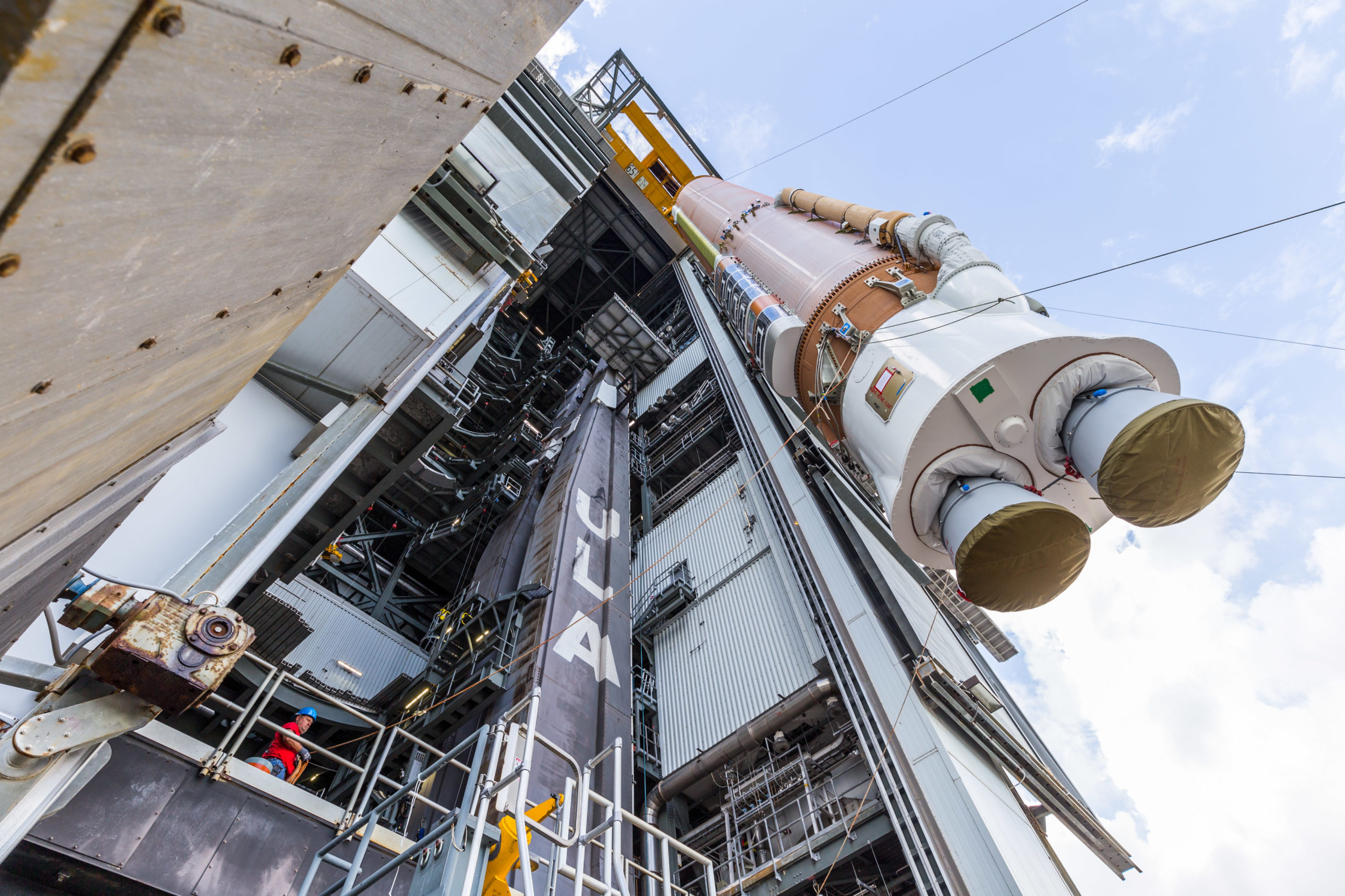
The arrival of Hurricane Ian saw the vehicle safely tucked away inside the VIF, although a launch at the end of September proved no longer feasible and T-0 was correspondingly rescheduled for 4 October. The Launch Readiness Review (LRR) concluded without incident on Saturday and at 9:59 a.m. EDT Monday the stack began its snail-like creep a quarter-mile (400 meters) from the VIF to the SLC-41 pad surface.
“Mighty Atlas is rolling to the pad with SES-20 and SES-21 at blistering walking speed,” tweeted ULA CEO Tory Bruno. “Almost there.”
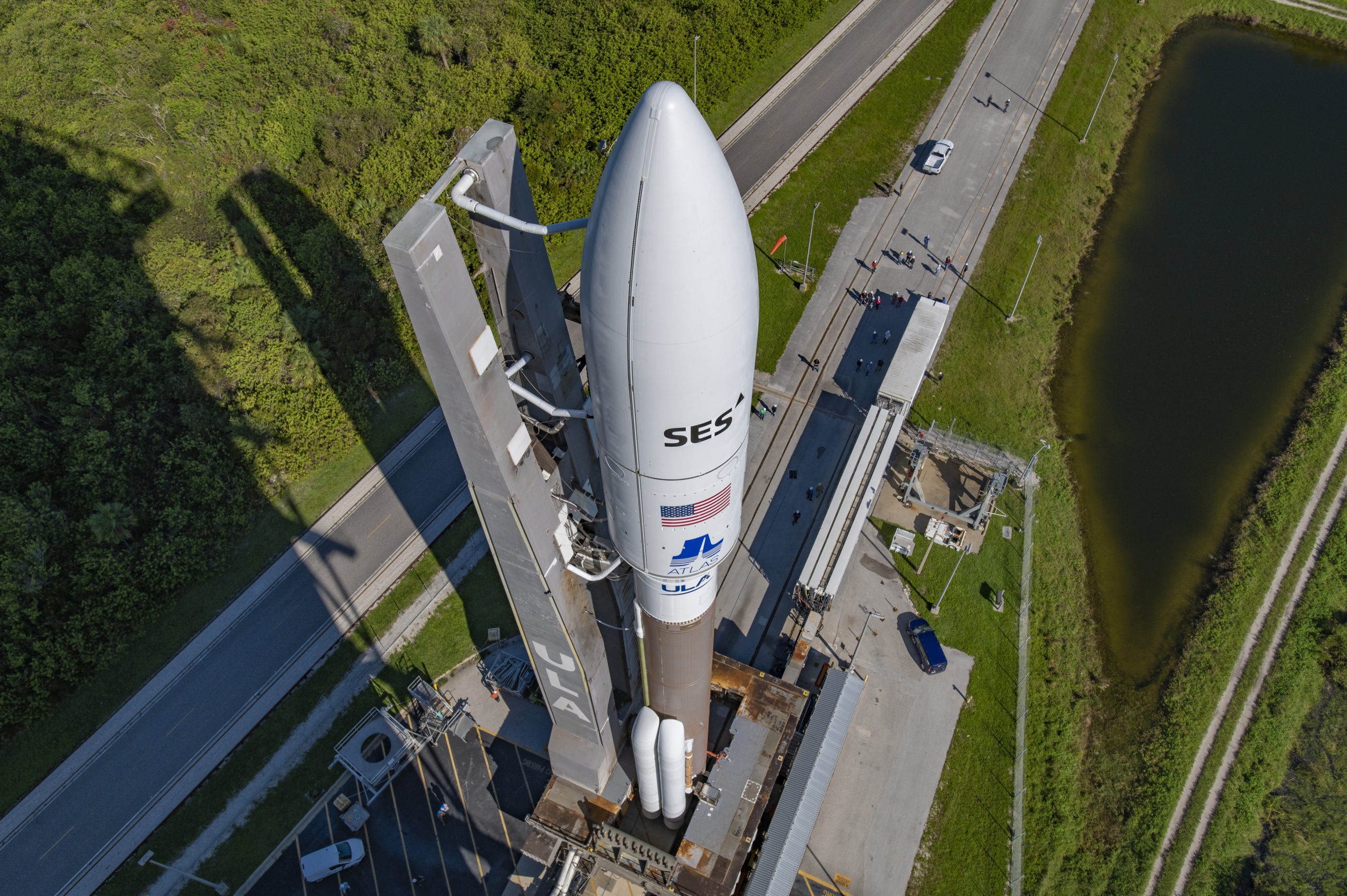
Within two hours, the Atlas V was declared “hard-down” on the pad pedestals. Late Monday, a highly refined form of rocket-grade kerosene (known as “RP-1”) was loaded into the Atlas tanks. Early Tuesday, countdown operations commenced about seven hours prior to T-0, as the weather forecast began trending upward to 90-percent “Go”.
Liftoff at 5:36 p.m. EDT was perfect, the Atlas V’s single RD-180 engine and the three GEM-63 boosters providing an initial thrust off the pad in excess of 1.6 million pounds (725,000 kilograms). The vehicle surpassed the speed of sound about 40 seconds into ascent and at just shy of a minute after launch entered a period of maximum aerodynamic turbulence—known colloquially as “Max Q”—on the airframe.
Their propellant exhausted, the three GEM-63s burned out and were discarded a little under two minutes into the mission, followed about 90 seconds later by the jettison of the SPF fairing halves to expose the SES-20/21 stack to the space environment for the first time. Shutdown of the RD-180 engine and separation of the CCB came about 4.5 minutes after departing the Cape.
With the common core booster thus gone, the turn now fell to the RL10C-1-1 engine of the Centaur upper stage, which was tasked with three discrete “burns” to precisely inject the two communications satellites very close to their eventual geostationary orbits. The first burn was timed to last about seven minutes, after which the stack would coasted, prior to a second burn of around five minutes.
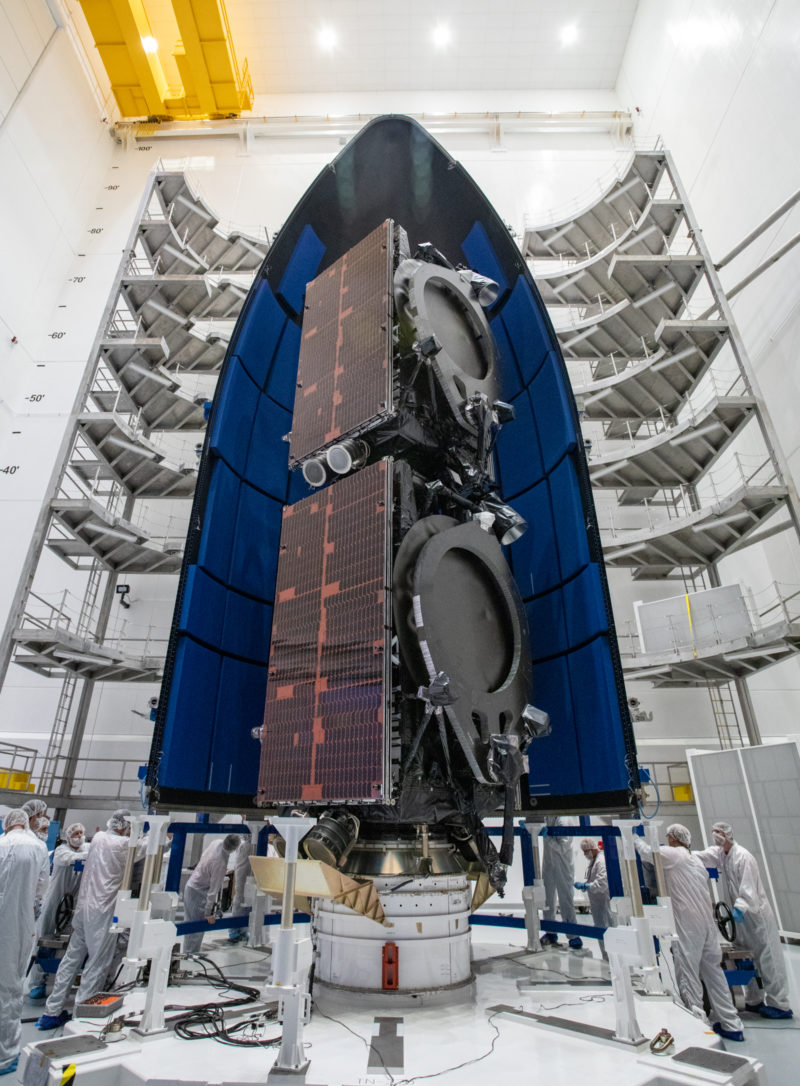
As this AmericaSpace story was being prepared, the third and final Centaur burn was due about 5.5 hours into the mission, with deployment of the SES-20/21 payload stack shortly thereafter. The two satellites—with SES-20 at the “top” of the stack and its near-twin beneath—were due to be deployed about 40 minutes apart.




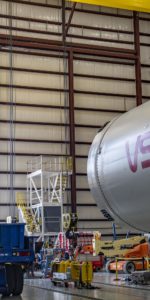
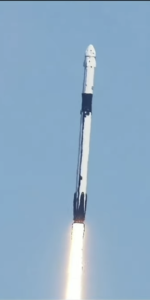
9 Comments
9 Pings & Trackbacks
Pingback:Crew-5 Launches Safely, Heads to Space Station - AmericaSpace
Pingback:SpaceX Launches Inmarsat-6 F2, Other GTO-Bound Missions Wait in Wings - AmericaSpace
Pingback:SpaceX Launches Inmarsat-6 F2, Other GTO-Bound Missions Wait in Wings - Space News
Pingback:Relativity Space Looks to Wednesday for Maiden Terran-1 Launch - AmericaSpace
Pingback:As SpaceX Lofts 40 OneWeb Satellites, Relativity Space Aims for Launch Attempt #2 on Saturday - AmericaSpace
Pingback:After Dramatic Engine Start and Recycle, Relativity Space Scrubs First Terran-1 Launch - AmericaSpace
Pingback:Vandenberg Launches Resume, As SpaceX Prepares for Friday Double-Header - AmericaSpace
Pingback:SpaceX Sets New Launch-to-Launch Record, Lofts SES-18/SES-19 Twins - AmericaSpace
Pingback:On Third Try, Relativity Launches Terran-1, Exceeds Max Q, Fails to Achieve Orbit - AmericaSpace